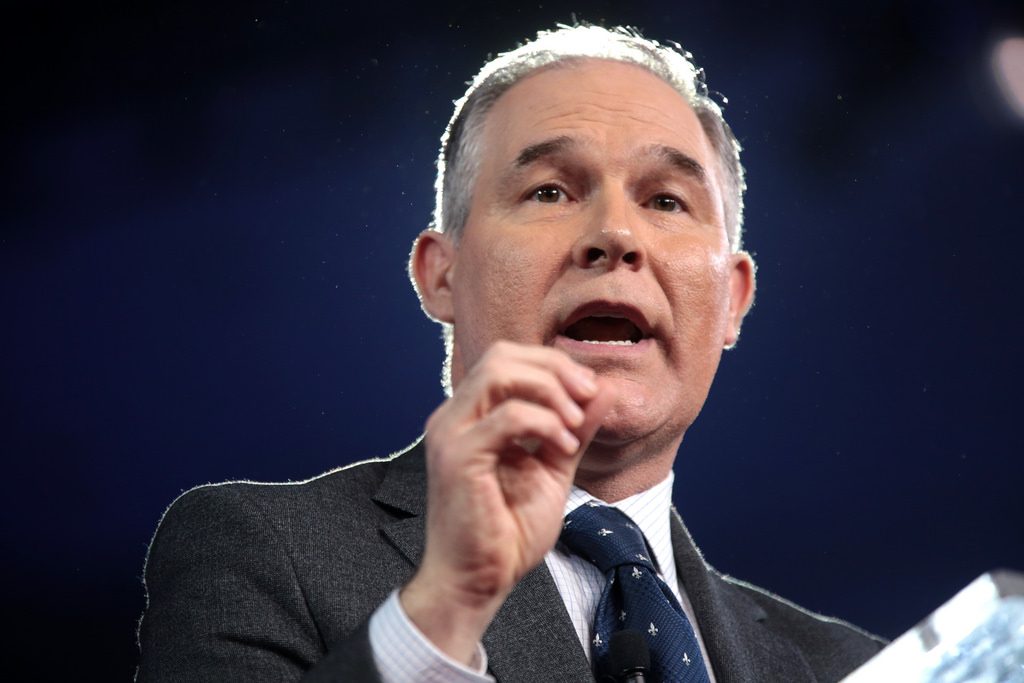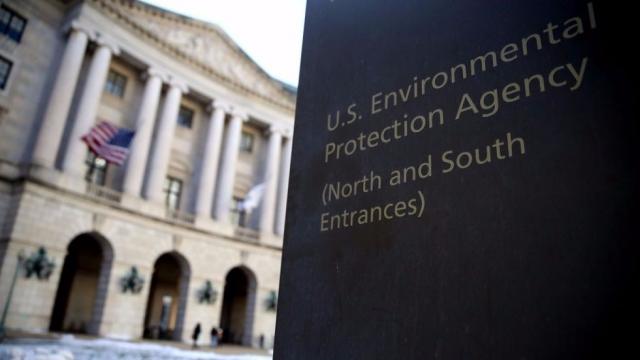One of the most egregious things about the EPA has always been the way it operated for the benefit of the large “environmental” groups and against the interests of states, communities, and individuals. Perhaps the worst part of this criminal collusion was the way the EPA used lawsuits against the EPA, coordinated with environmental groups, to short-circuit the rule-making process, deprive the public of their right to petition the government and keep the coffers of environmental groups topped off with EPA cash.
This is how it worked:
“Sue and Settle “ practices, sometimes referred to as “friendly lawsuits”, are cozy deals through which far-left radical environmental groups file lawsuits against federal agencies wherein court-ordered “consent decrees” are issued based upon a prearranged settlement agreement they collaboratively craft together in advance behind closed doors. Then, rather than allowing the entire process to play out, the agency being sued settles the lawsuit by agreeing to move forward with the requested action they and the litigants both want.
In other words, the agency throws the case, somewhat like Bre’r Rabbit agreeing to be thrown into a favorite brier-patch. A big difference however, is that in this case, Farmer McGregor and Mr. Rabbit were partners in the scam from the beginning. It’s the unwary American public that actually does get caught in the thorns.

While the environmental group is given a seat at the table, outsiders who are most impacted are excluded, with no opportunity to object to the settlements. Accordingly, both the litigants and the defendant agency, operating in coffee bars and friendly courtroom shadows, avoid the harsh outside glare of oversight. No public notice about the settlement is released until the agreement is filed in court…after the damage has been done.
Sometimes decrees were negotiated and approved that exceeded the authority of the court approving the decree…this is a different but related issue of the EPA and environmentalist groups cherry-picking courts and judges. Not only do the ‘green’ groups often get cash payouts above and beyond attorney’s fees, the policies they impose are often detrimental and would never have been enacted had state and local officials had the opportunity to weigh in:
The Chamber’s study author, William Yeatman, Assistant Director for Energy and Environment at the Competitive Enterprise Institute (CEI), emphasizes that EPA’s abuse of its Regional Haze authority forces states to relinquish their authority and accept EPA’s far more expensive plans, thereby increasing consumer utility charges. He concluded that: “… no state is immune from having its rightful Regional Haze authority trampled by EPA at profound costs for virtually nonexistent benefits.”
Having conducted eight state case studies, Yeatman found that:
- In Arizona, EPA’s Regional Haze regulation threatens to increase the cost of water, forcing the state to spend an additional $90.2 million per year to implement the federal regulation.
- In Montana, EPA’s proposed Regional Haze controls are nearly 250% more expensive than what that agency’s standing rules presume to be “cost-effective” for compliance,
- In 2011, the EPA disregarded New Mexico’s Regional Haze plan, instead imposing a federal plan that requires nearly $840 million more in capital costs…potentially raising average annual household utility bills by $120.
- Although North Dakota is one of only 12 states that achieves all of EPA’s air quality standards for public health, it would not be able to achieve EPA’s Regional Haze goals for visibility even by shutting down all industry. The EPA plan would also cost the state an additional $13 million per year,
- Refusing to approve Oklahoma’s Regional Haze plan, the EPA’s plan would cost the state $282 million annually.
- In Wyoming, the EPA proposed a federal implementation plan that would cost almost $96 million per year more than the state’s plan.
- Minnesota is subject to back-to-back Regional Haze regulations, whereby EPA is claiming authority to regulate regional haze twice in succession at its Sherburne County generating plant.
- EPA’s proposed plan would cost Nebraska nearly $24 million per year to achieve invisible “benefits”.
[wp_ad_camp_3]
The deals were cloaked in secrecy and top EPA officials were very much hands-on in working to use these agreements to keep the public in the dark:
Unfortunately, getting federal agencies to comply with formal FOIA requests isn’t proving to be easy. And to make matters worse, there is evidence that top bureaucrats have even used private e-mail accounts and aliases to cover culpability tracks.
For example, Senator Vitter, along with Representative Darrell Issa (R-Calif.) who heads the House Oversight and Government Reform Committee, recently sent a letter to James Martin, EPA’s Region 8 administrator, warning him: “The use of personal, non-official e-mail accounts raises concerns that you could be attempting to insulate this and other e-mail correspondence from a Freedom of Information Act request. Moreover, your actions may also constitute violation of the Federal Records Act”…evading congressional oversight of federal agencies.
One of those private e-mails at issue involved an exchange between Martin and Vickie Patton, the General Counsel for the Environmental Defense Fund, regarding an arranged meeting with him. Patton wrote: “Hi Jim, Next Monday or Tuesday December 12/13 at 9am depending on which is best for you.” Responding, Martin replied: “January 13 at 9:00 am works for me if it works for you. (Lost your original note-is that the date and time you proposed?” Vitter and Issa have confirmed that the meeting did, in fact, take place at the EPA regional office.
Several Martin e-mails were released by EPA as the result of a FOIA lawsuit lodged by Christopher Horner of the Competitive Enterprise Institute. Horner’s efforts also revealed evidence that former EPA Administrator Lisa Jackson was conducting official agency business under cover of the alias name “Richard Windsor”, and CEI also sued EPA seeking e-mails concerning the EPA’s behind-the-scenes regulatory war on coal plants. Horner’s new book, The Liberal War on Transparency, discusses this and other tricks.
Suspicions abound that the exposure of Jackson’s undercover communications had much to do with her departure decision shortly afterwards. Senator Vitter commented: “I think this e-mail issue clearly spurred Lisa Jackson’s resignation. But it’s much broader than her. It’s about a culture of hiding an extreme agenda from Americans because it can’t be sustained in public debate.”
For more information, you need to read this report by Heritage and these links from US Chamber of Commerce (here | here).
Shortly after he was nominated, EPA Administrator Scott Pruitt said that he would end this anti-democratic process. Today he delivered.

In fulfilling his promise to end the practice of regulation through litigation that has harmed the American public, EPA Administrator Scott Pruitt issued an Agency-wide directive today designed to end “sue and settle” practices within the Agency, providing an unprecedented level of public participation and transparency in EPA consent decrees and settlement agreements.
The days of regulation through litigation are over,” said EPA Administrator Scott Pruitt. “We will no longer go behind closed doors and use consent decrees and settlement agreements to resolve lawsuits filed against the Agency by special interest groups where doing so would circumvent the regulatory process set forth by Congress. Additionally, gone are the days of routinely paying tens of thousands of dollars in attorney’s fees to these groups with which we swiftly settle.”
…
“Sue and settle” cases establish Agency obligations without participation by states and/or the regulated community; foreclose meaningful public participation in rulemaking; effectively force the Agency to reach certain regulatory outcomes; and, cost the American taxpayer millions of dollars.
Of course, the EPA is still bound by past shenanigans but going forward the ‘green’ groups will find the EPA is not a willing partner in litigation.
View the original story at Red State



